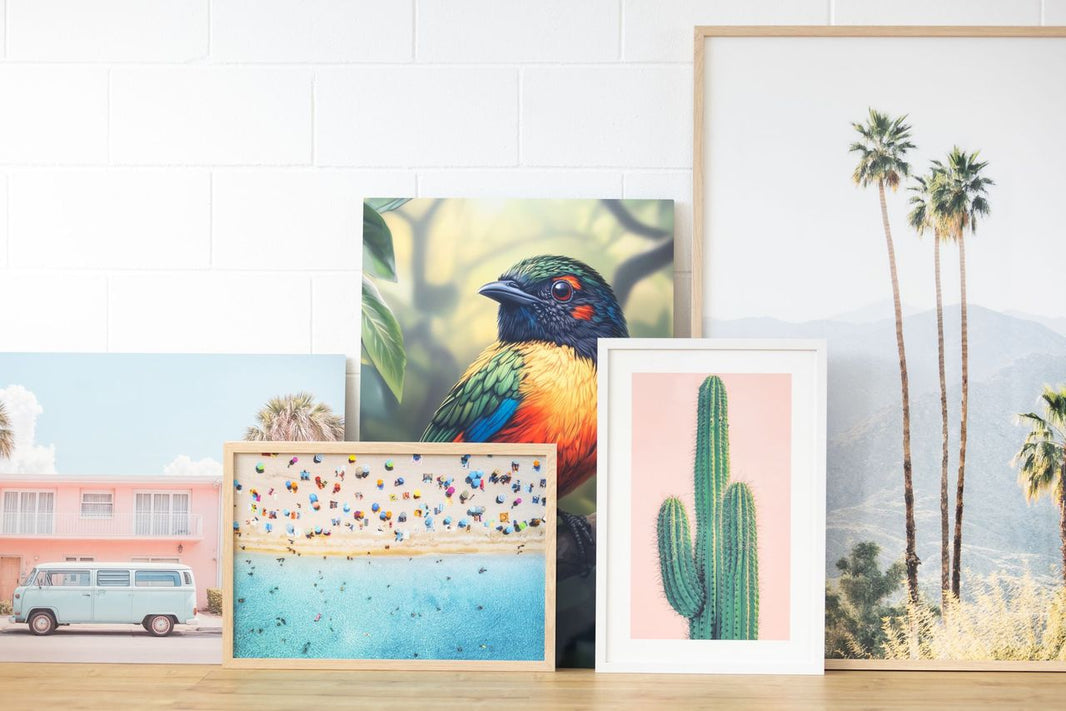A giclée print is a high-quality reproduction using pigment-based inks and archival paper. It’s known for its sharp detail, rich colour, and long-lasting finish.
Unlike standard photo prints, giclée printing uses fade-resistant inks and heavyweight papers to produce a result that closely resembles an original artwork or high-resolution photograph. The term “giclée” (pronounced zhee-clay) comes from the French word meaning “to spray,” and refers to how the ink is applied during printing.
Giclée prints are often used for fine art reproductions, professional photography, and premium personal prints where quality and longevity matter.
What Is A Giclée Print?
Giclée prints use high-resolution inkjet printers to spray pigment-based inks onto archival paper. The result is a print that’s sharp, vibrant, and built to last.
For a print to be considered a true giclée, three things matter:
- Pigment-based inks – These are more stable than standard dye inks. They’re resistant to fading and help your print keep its colour for decades.
- Archival paper – This is acid-free, heavyweight paper made to protect the print over time. Most giclée prints use cotton rag or textured fine art paper.
- High-resolution files – To get the detail right, the image needs to be at least 300 DPI (dots per inch), which is the standard for professional print quality. This ensures smooth tones, crisp lines, and no pixelation.
This method isn’t just about quality, it’s about preserving the way your image looks and feels. Whether you’re printing a photo, artwork, or digital design, giclée print gives it a finish that feels gallery-ready.
How Giclée Printing Compares to Standard Photo Prints
If you’re deciding between a giclée print and a standard photo print, the difference comes down to one thing: what you want the print to do.
While standard photo prints are fine for everyday use, they’re not built to stay vibrant long-term like Giclée prints do.
Here’s a simple breakdown:
Frequently Asked Questions About Giclée Print
Not exactly. Giclée printing uses inkjet technology, but not all inkjet prints qualify as giclée. To meet that standard, the print must use pigment-based inks, archival-grade paper, and a high-resolution image file, typically 300 DPI or higher. It’s a combination of materials and precision that sets giclée apart from basic photo prints.
Not at all. While giclée is popular among creatives for reproducing art and photography, it's just as suitable for personal photos, especially when you’re framing them, displaying them or giving them as gifts.
When properly framed or stored, giclée prints can last 80 to 100+ years without noticeable fading. This is due to the use of pigment-based inks and archival-grade paper, both designed for long-term preservation.
Yes, as long as the image is high resolution. Many newer phones produce large, high-quality image files suitable for giclée printing. Just make sure the photo hasn’t been compressed or filtered too heavily before uploading.
Giclée can cost slightly more than standard photo prints, but usually only by a small margin. The added cost comes from using longer-lasting inks and higher-quality papers. If you’re printing something to display, gift, or keep long-term, it’s typically worth the upgrade.






